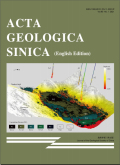地质学报(英文版)2024,Vol.98Issue(2):352-367,16.DOI:10.1111/1755-6724.15149
Early Devonian Post-collisional Granitic Magmatism in the North Qilian Orogenic Belt,Western China:Insights into Lithospheric Delamination and Orogenic Collapse
Early Devonian Post-collisional Granitic Magmatism in the North Qilian Orogenic Belt,Western China:Insights into Lithospheric Delamination and Orogenic Collapse
摘要
关键词
post-collisional magmatism/lithospheric delamination/extensional collapse/North Qilian Orogenic BeltKey words
post-collisional magmatism/lithospheric delamination/extensional collapse/North Qilian Orogenic Belt引用本文复制引用
WANG Qian,ZHAO Xilin,MENG Yuanku,YU Shengyao,LIU Yanan..Early Devonian Post-collisional Granitic Magmatism in the North Qilian Orogenic Belt,Western China:Insights into Lithospheric Delamination and Orogenic Collapse[J].地质学报(英文版),2024,98(2):352-367,16.基金项目
This work was supported by the Natural Science Foundation of Shandong Province(Grant No.ZR2022QD055),the Taishan Scholars(Grant No.tstp 20231214)and the National Natural Science Foundation of China(Grant No.42372247). (Grant No.ZR2022QD055)

